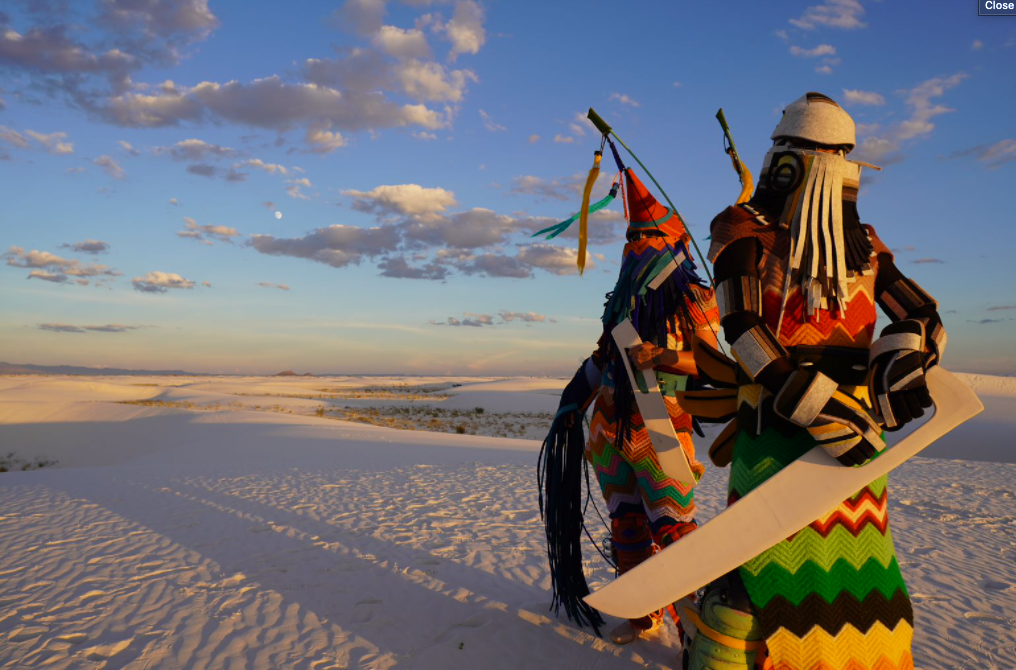
Future Ancestral Technologies (2021)
Film still and location photo courtesy of Cannupa Hanska Luger
Photographer: Gabe Fernin, 2021
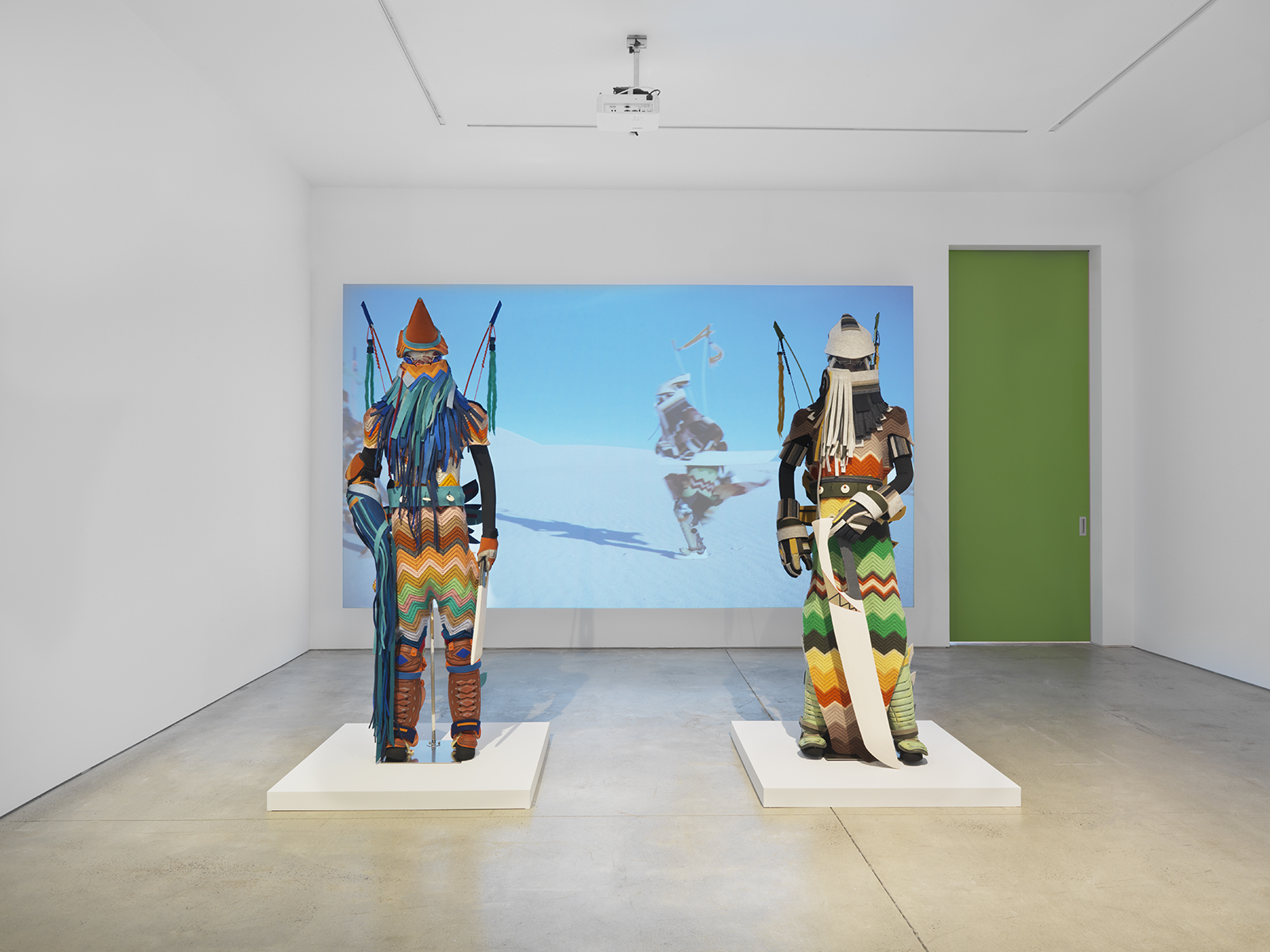

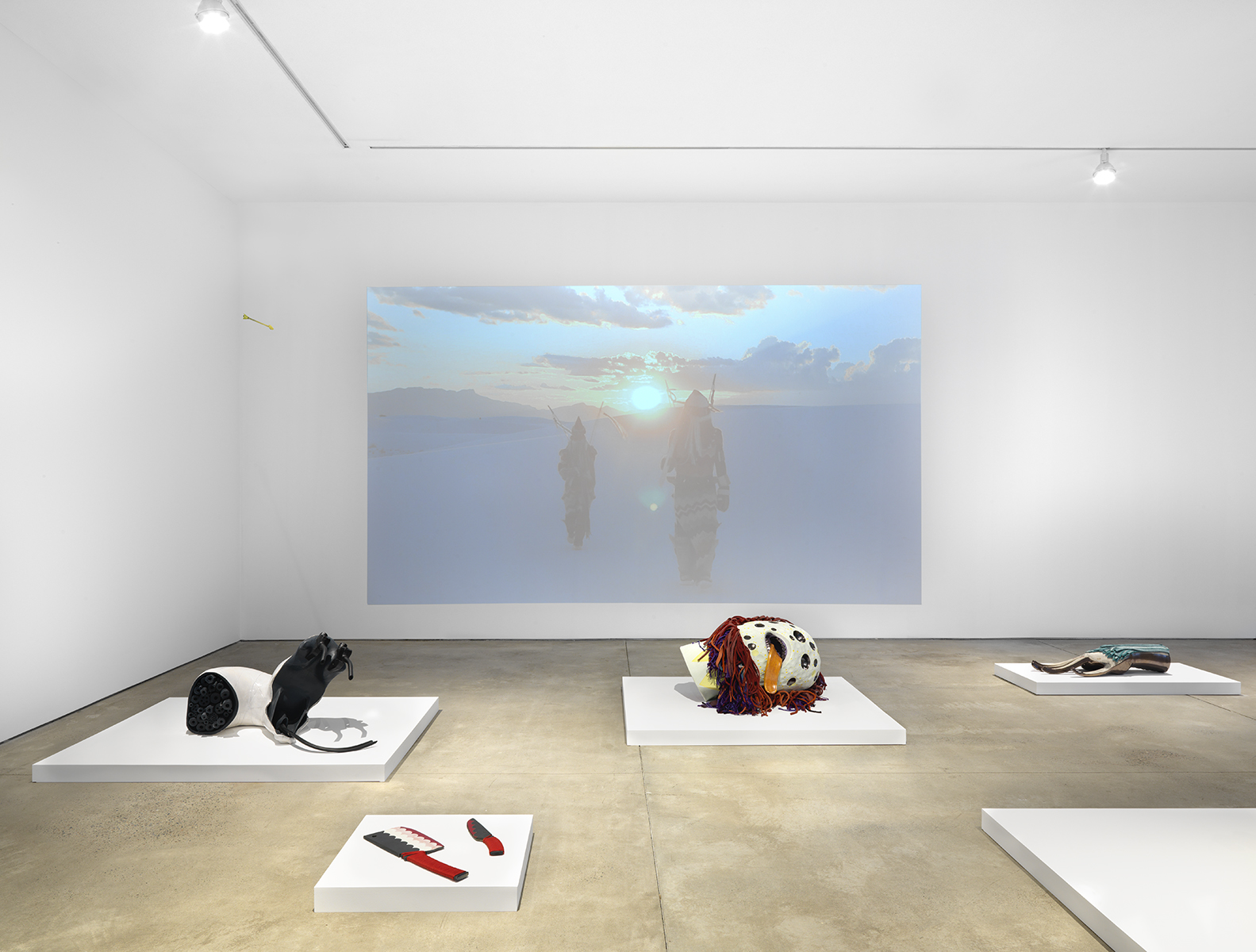
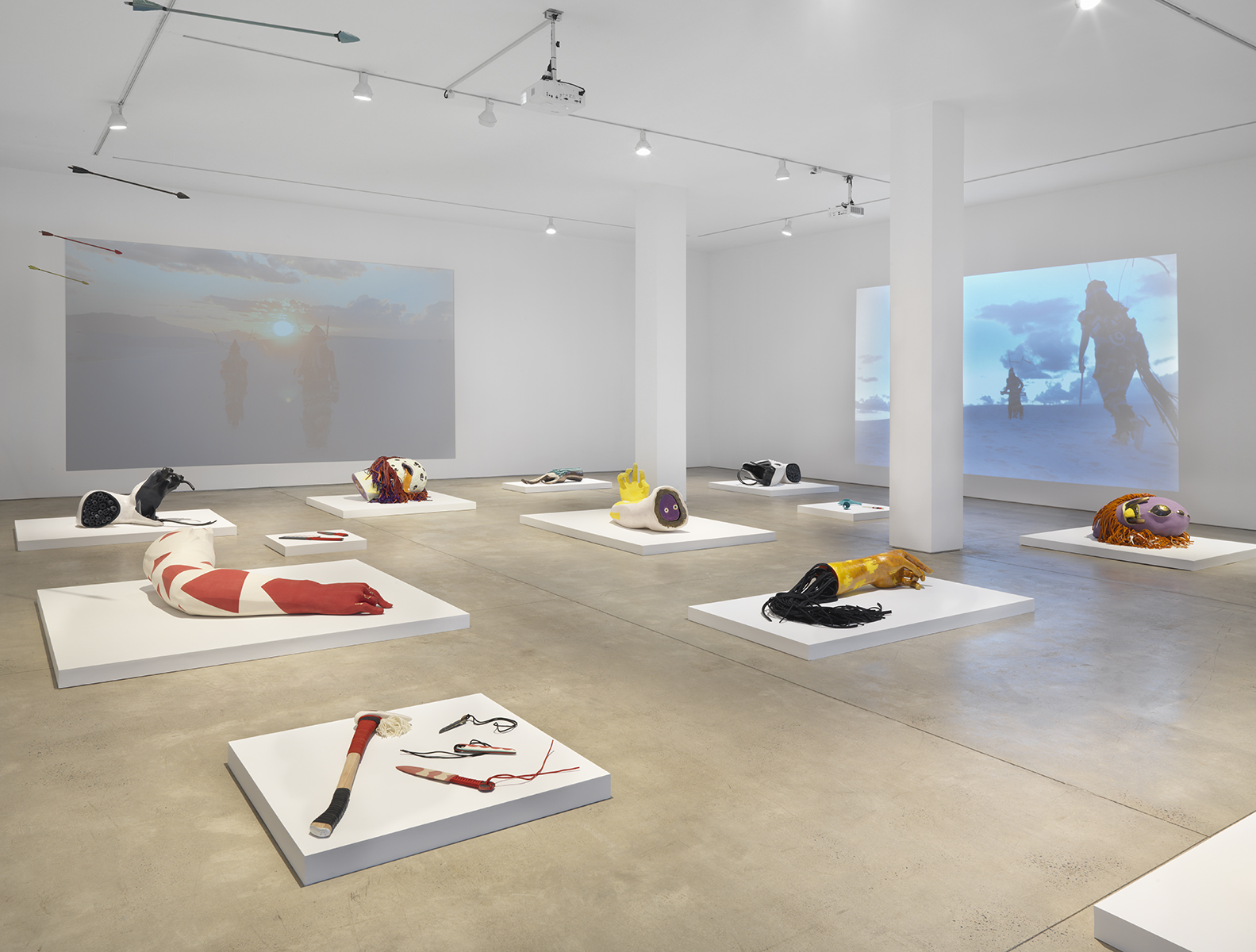
New Myth Exhibition
September 10–October 23, 2021
Garth Greenan Gallery, New York, NY
Image credits: Exhibition photos courtesy of Garth Greenan Gallery, 2021
Garth Greenan Gallery Press Release:
Garth Greenan Gallery is pleased to announce Cannupa Hanska Luger: New Myth, an exhibition of new, never-before-exhibited ceramic and mixed-media sculptures by Cannupa Hanska Luger, along with a new three-channel video from the artist’s ongoing Future Ancestral Technologies project. Opening on Friday, September 10, 2021, the exhibition is the artist’s first with the gallery.
Working in ceramic, textiles, and mixed media, Luger crafts monstrous figures and vividly colored weapons that fill the gallery like remnants from an epic battle. Giant snake heads, thick black muscle fibers spilling out of their severed necks, rear their fangs shaped like the nozzle on a gas pump. The head of a three-eyed monster, Greed, lies on its side, its acid yellow tongue lolling out uselessly. A twisted hand, chopped off at the wrist, has its title, Ruin, tattooed across its knuckles in blood-red pigment, golden bite marks visible beneath a layer of matted blue hair.
Monster archetypes cut across cultural boundaries, continents, and time periods. “Today,” Luger says, “we are once again plagued by monsters.” In these works, Luger creates a new mythology, manifesting societal ills as corporeal monsters and illustrating their destruction – complete with bloodied weapons – to “recognize the agency we have to slay our present-day monsters.”
The exhibition also includes regalia for two heroic slayer figures and a three-channel video installment in Luger’s Future Ancestral Technologies, an ongoing project to create an immersive world of Indigenous science fiction. Luger describes the project as a methodology, a practice, and a way of future dreaming that harnesses the power of science fiction to shape collective thinking and reimagine the future on a global scale.
Through installation, video, and land-based work, the series develops an ongoing narrative in which Indigenous people develop sustainable, migration-based technology to live nomadically in hyper-attunement to land and water. Within the limitless time jumps of Future Ancestral Technologies, Luger challenges our collective thinking to imagine a post-capitalist, post-colonial future where humans restore their bonds with the earth and each other, asking us to consider how we will dream of our collective future.
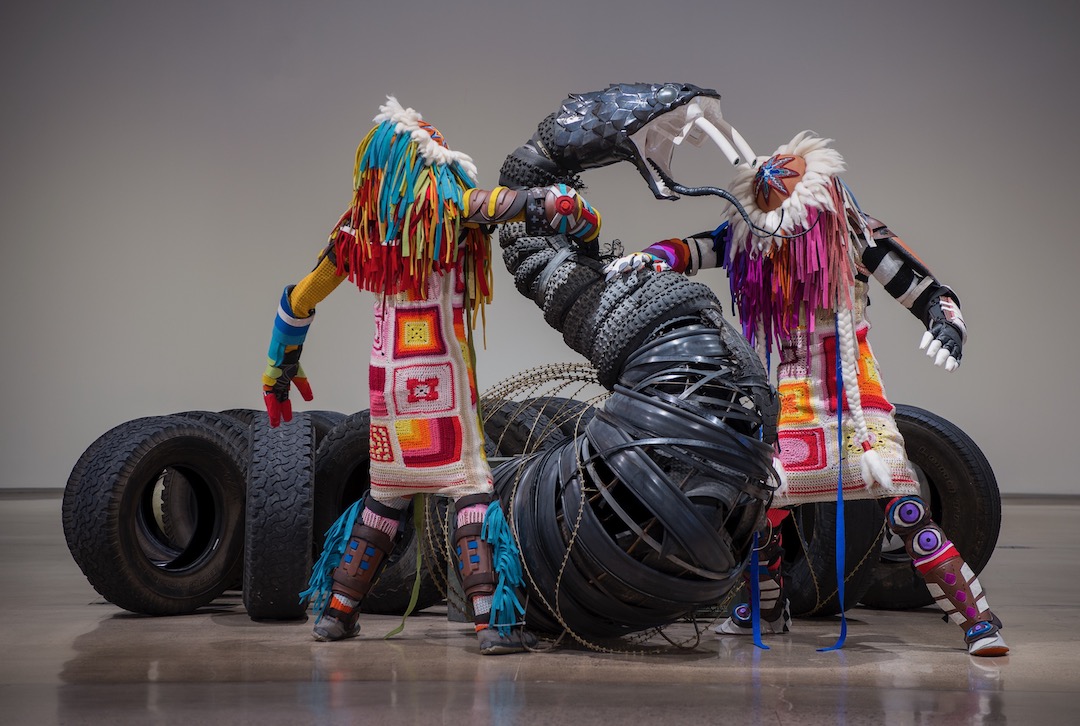
This Is Not A Snake (2017-2020)
Ceramic, fiber, steel, oil drums, concertina wire, ammunition cans, trash, found objects
Approx Dims: 6.5' H x 3' W x 50' D
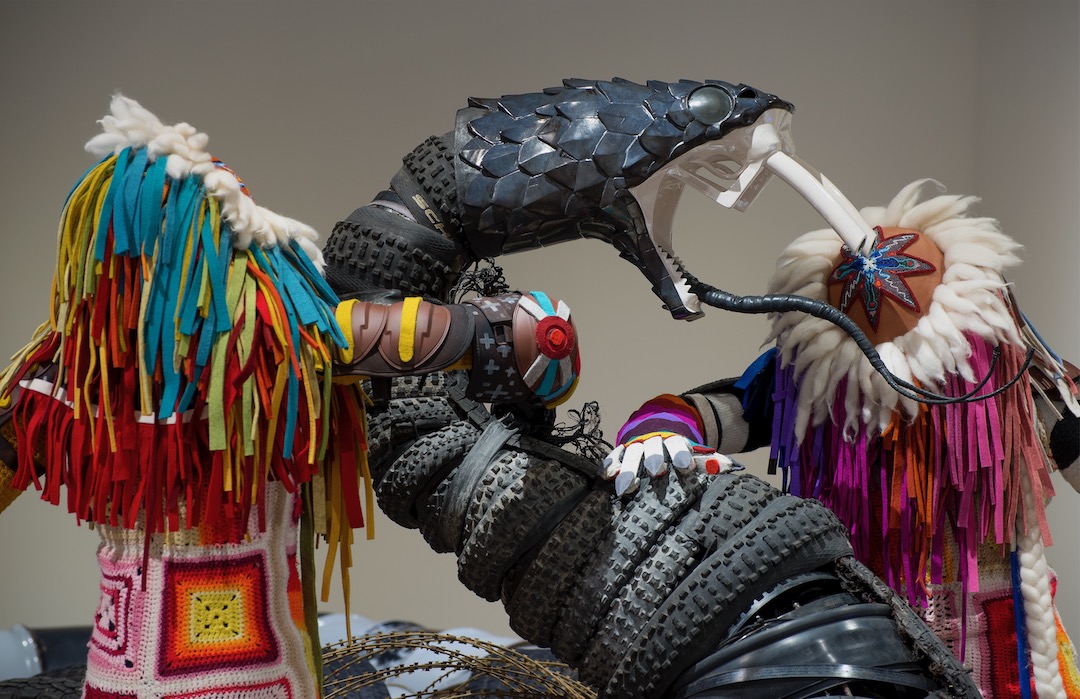
The One Who Checks & The One Who Balances (2018)
Beadwork, surplus industrial felt, ceramic, riot gear, afghan
Approx Dims each: 6.5’ H x 2.5’ W x 1.5’ D
This large-scale installation comprises two individual works of art: The One Who Checks & The One Who Balances and This Is Not a Snake. The One Who Checks & The One Who Balances is a set of two figures, wearing what the artist describes as “futuristic Indigenous regalia” comprised of found crocheted afghan blankets, ceramic, industrial felt, and beadwork by the artist’s mother, Kathy Elkwoman Whitman. The regalia has been worn by the artist and other collaborators in performative actions in response to communities whose land and culture are impacted by resource extraction, water rights, borders, and gentrification. In This is Not A Snake, Luger has created and continues to create an on-going sculpture he describes as a “grotesquely poignant winding tapestry of waste.” The work itself is comprised of the detritus and waste of extractive industries and structurally violent systems created and supported through capitalistic colonialism, including but not limited to resource extraction, the prison and military industrial complexes, and the weaponization of borders. Concertina wire, tires, munition cans, oil drums, and plastic buckets twist in a serpentine formation in the gallery and are interspersed with ceramic pieces the artist made, as well as fiber and steel elements as a means to “represent the industrial exploitation of land and its minerals,” Luger stated. The piece grows and will continues to grow in tandem with the sustained growth to these extractive and violent systems until these forms or repression cease.
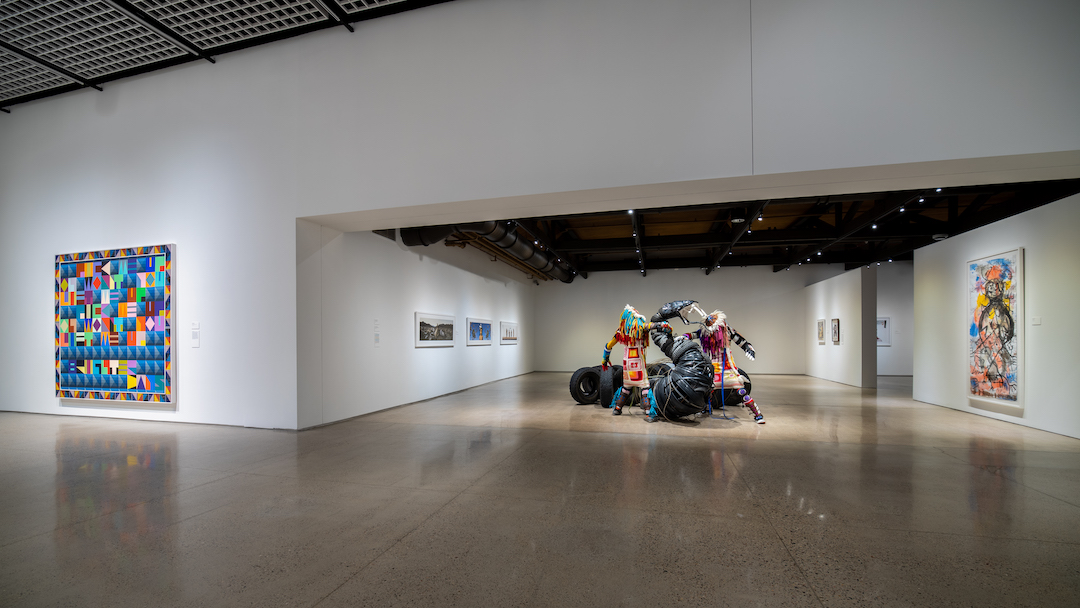
This Is Not A Snake / The One Who Checks & The One Who Balances (2017-2020)
Image Credit: Craig Smith for Heard Museum, 2020
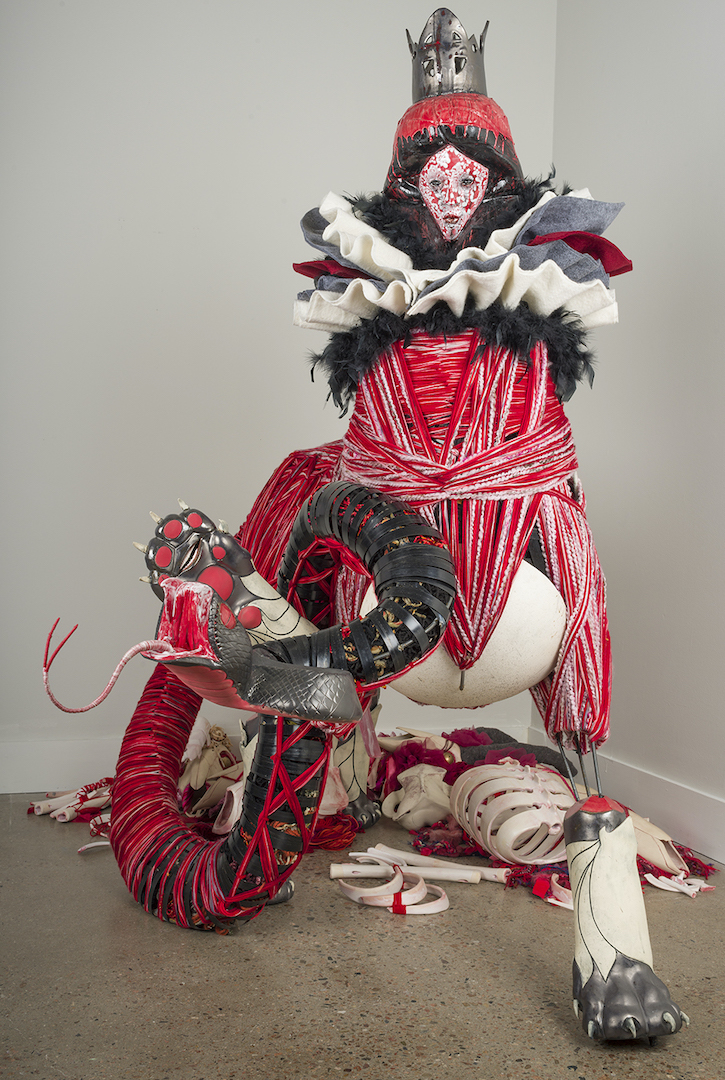
Savage Noble (2017)
ceramic, steel, fiber
6' H x 8' W x 8' D
Image Credit: Robert Erlichman, Art Guild Press

Savage Noble (detail)
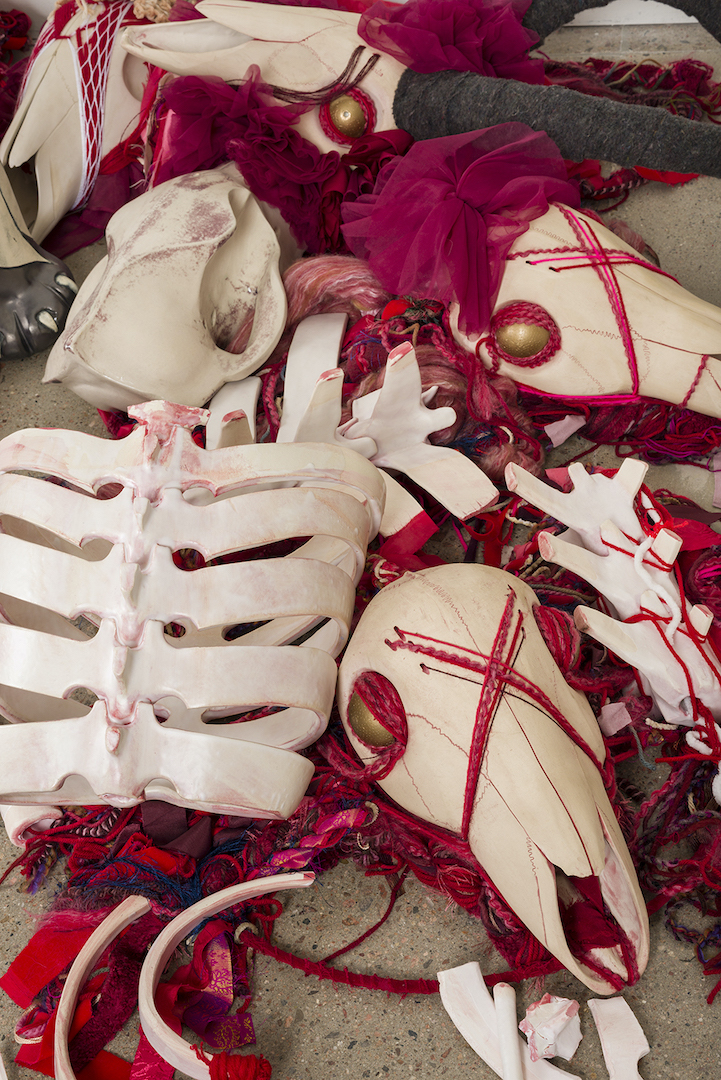
Savage Noble (detail)
Savage Noble is the embodiment of colonial power. The collateral effect of dominion imposed on the natural order of cooperation manifest as monster. This beast is representative of the man-faced manticore, a mythical creature whose bite and scratch are poisonous, and which devours all in its path. We are in a modern era of monsters and Savage Noble reminds us of the carnage from our continued path of consumption. This beast marks our displacement as human beings from the land, from the natural cycles of the planet and reminds us of our inability to acknowledge and coexist with the natural world. The historical term ‘Noble Savage’ distorted the Indigenous populations of the Americas into ‘other’ through a colonized lens, separating all things that were identifiably different and marking them for consumption; Savage Noble in this same respect of term, commends colonial and capitalist power structuring itself as monster. By creating the narrative focus from an Indigenous perspective, we see this beast for what it is, and so now we may slay it.

(Be)Longing (2019)
mixed media life-size buffalo skeleton, sculptural installation
42” H x 80” W x 80” D
ceramic, steel, ribbon, fiber
Image Credit: Kate Russel Photography, 2020
(Be)Longing (2019)
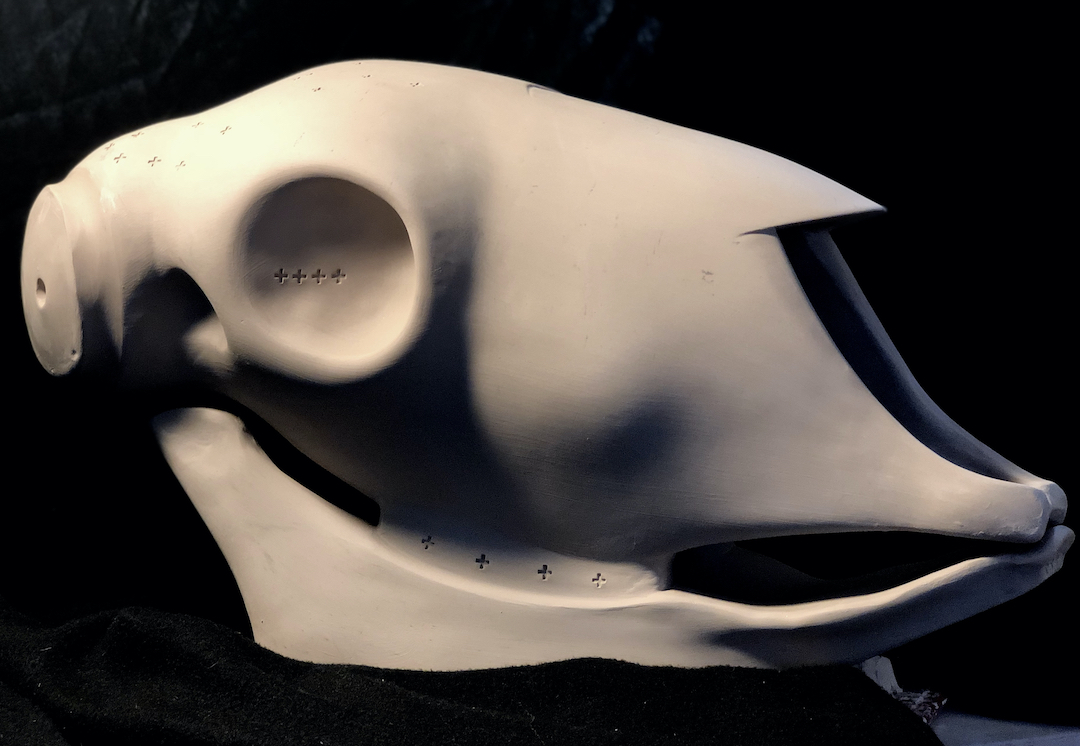
(Be)Longing (skull WIP)
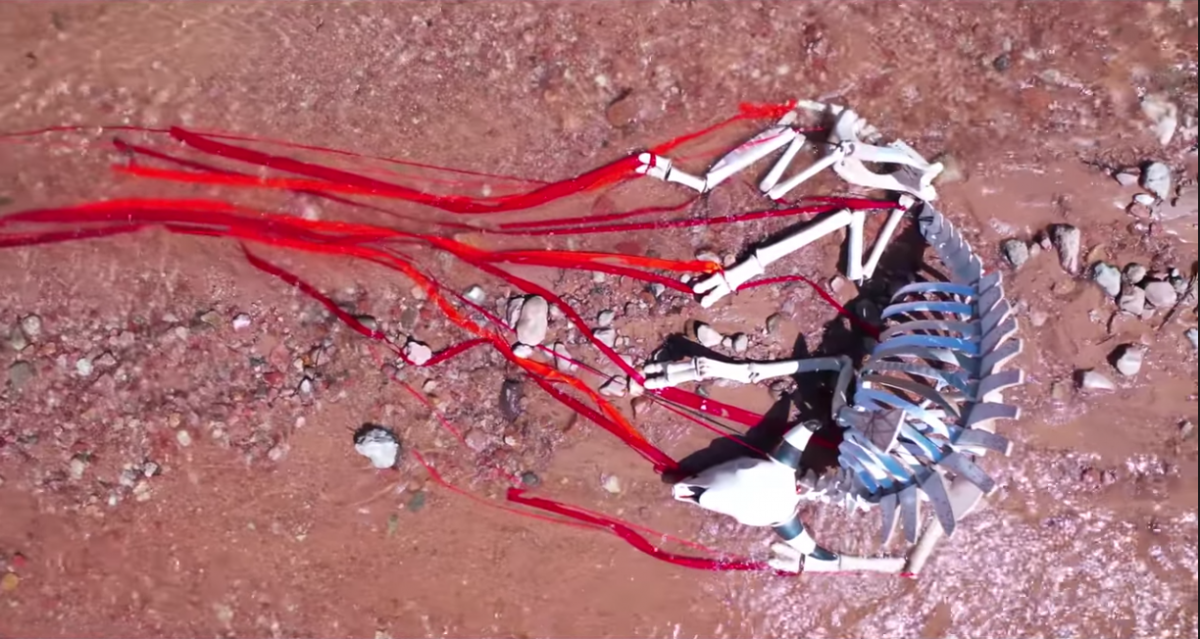
(Be)Longing Video Poem (YouTube Video)
I live because my ancestors survived a war of attrition. Carried out by settlers in order to subjugate Plains Tribes, this war of attrition decimated the North American buffalo population. By the year 1895, buffalo herds declined from tens of millions to a mere 1500. Historic images of this era documented massive pyramids of buffalo skulls as monuments of conquest scattered throughout my ancestral lands of the Great Plains. This loss of species not only affected my ancestors but also the land. Running down the center of North America, the Great Plains are one of the most endangered environments; many Indigenous grasses are dependent on the buffalo to thrive and have therefore also degenerated. In fact, there can be no true restoration without roaming herds of buffalo. (Be)longing explores the cascading effects of a decimated species on our precious and interconnected environment.
(Be)Longing is a figurative ceramic and steel sculpture in the form of a full-sized buffalo skeleton that is both sculpture and subject in a series of videos. Shot by drone, this video surveys a river, encountering the buffalo skeleton submerged in the shallow headwaters where it ostensibly taints the water source. The installation includes both the massive skeleton and this video.
(Be)Longing expresses how losing one species a hundred years ago has lasting effects in the 21st century. Through installation, sculpture and video, the piece implores audiences not to wait another hundred years to protect the next species in peril.
**Artist Cannupa Hanska Luger’s ceramic sculptural life size buffalo skeleton (Be)Longing is in the permanent collection of The Hood Museum of Art at Dartmouth College, Hanover, New Hampshire, in the United States.

Everything Anywhere (2016-2018)
Medium: ceramic, fiber, steel, sound
12’ h x7’ w x7’ d (approximate dimensions, size does not account for fiber ‘hair’ installation)
Image Credit: Lauren Johnson
Everything Anywhere premiered as an installation at the Center for Contemporary Arts, Santa Fe, NM in 2016. This work will be an outdoor land art installation for the UCCS GOCA's new facility premier exhibition in 2018. Everything Anywhere is a metaphor of the universe that draws upon the intercultural manifestation of nature through matriarchal forms. The installation embodies the fluid nature of a collective human experience; how humanity and individuality react to an overarching social structure and dependence to a human connection and the land for survival.


On The Shoulders Of Giants
Cannupa Hanska Luger in collaboration with Jesse Hazelip
Ceramic, mixed media 2018
Shoulders of Giants is a grouping of 7 ceramic buffalo skulls created by Cannupa Hanska Luger, with hand carved inscriptions and imagery by artist and activist Jesse Hazelip. This work references the effects of industrialization such as in the prison and military industries while simultaneously reflecting the atrocity committed by the occupiers of North America including the decimation of the Bison and the colonized practice of severing migration routes of Indigenous populations and their food sources through borders and land grabs.
“Through pushing militarization and industrialization, the United States continues to ignore opportunities for learning, reflection and accountability.” -Jesse Hazelip
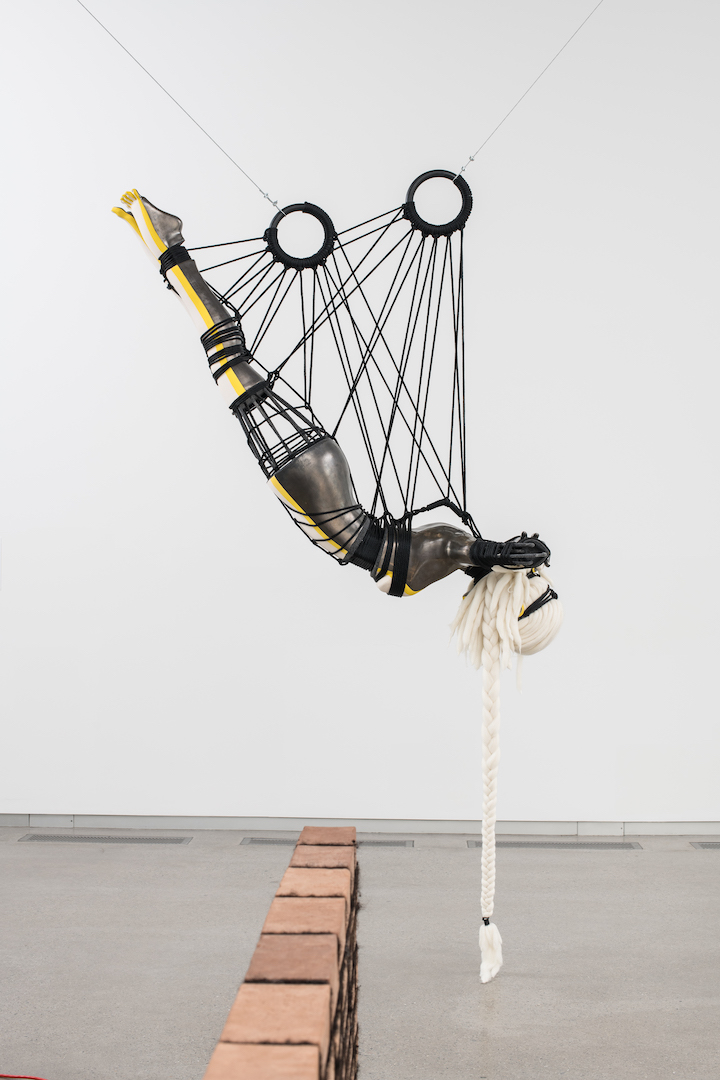
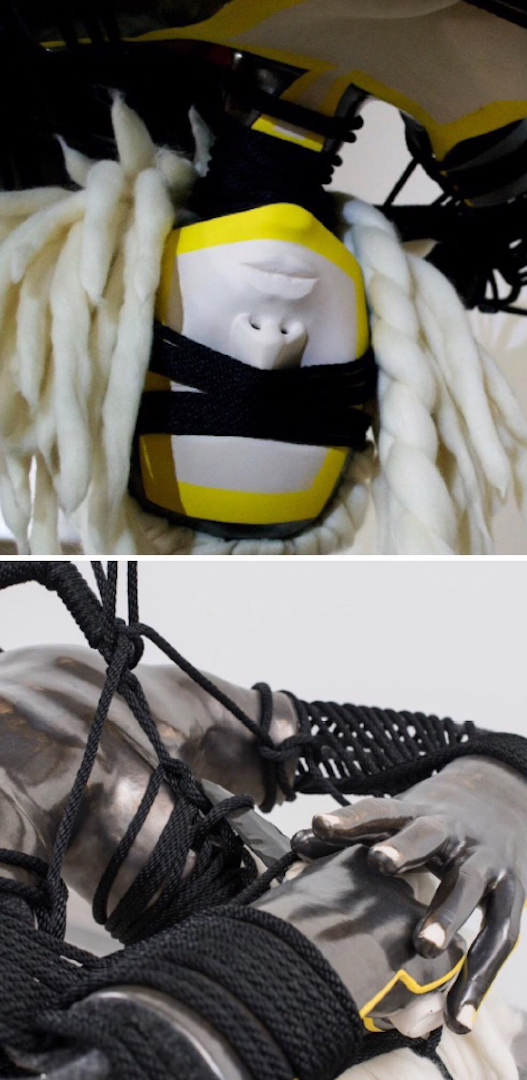
We Have Agency XI (2018)
Ceramic, steel, rope, wool
Sculptural installation, 9’ H x 5’ W x 3’ D
The falling figure in We Have Agency XI represents human dependence on extractive industries and explores both the discomfort and resilience of severing this bond. The figure holds a knife in her bound hands. She is in an act of severing the bonds of a perceived dependency she is caught in. When the knife is recognized, the work immediately transforms from a static state of victim into an action of agency. The figure releases herself from her perceived dependency or constraints which represent colonized power structures, capitalism and extractive industry.
Part of a continual sculptural series which began in 2016, this figure is the largest interpretation of the series to date, and is the first of the series which engages with color as part of the concept. The combination of white, yellow and black glaze pigments mirrors the colors within our industrialized world which have always represented caution. The sculpture, bound and suspended from the ceiling, embodies the cautionary tale of perceived dependence.
We Have Agency XI was premiered as a site-specific installation for group exhibition DECLARATION, April-September 2018 at the new Institute for Contemporary Art, Virginia Commonwealth University in Richmond, VA. In the permanent collection of the Museum of Contemporary Native Arts, Santa Fe, NM.
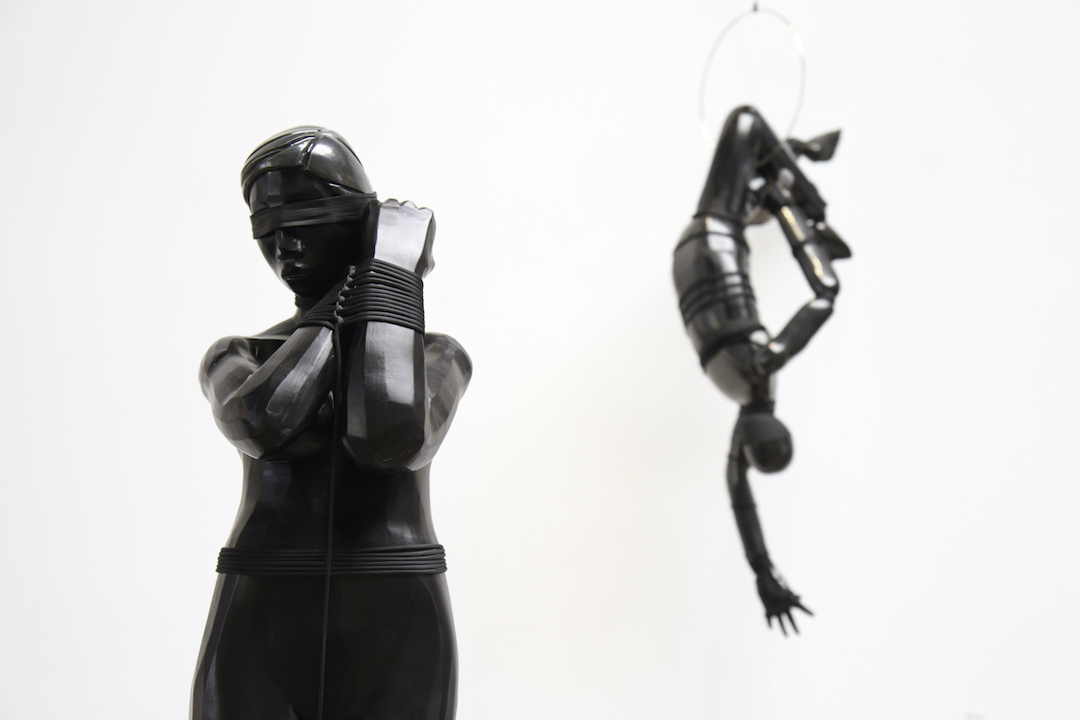

We Have Agency series (2016)
Medium: ceramic, steel, nylon cord
4' h x 1.5' w x 1' d (approximate dimensions variable)
Image Credit: D’Nelle Garcia, Blue Rain Gallery
We Have Agency series premiered at Blue Rain Gallery for the 2016 Contemporary Native Artists Showcase in Santa Fe, NM. The ceramic and steel figures represent the fragility and resilience of humanity, while presenting the reality that severing bonds or dependency, such as humanities affair with extractive industry, is often met with a fall. The anticipation of the fall that each of these pieces display may cause discomfort upon recognition but, “you will fall, but then you will be free.”
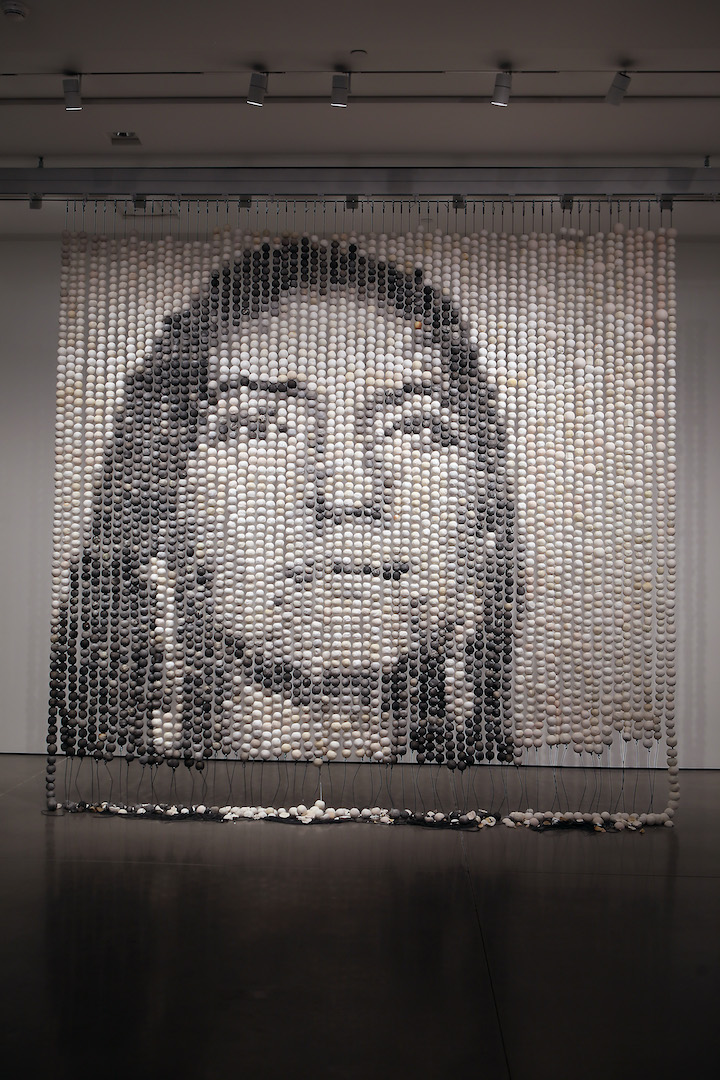

Every One (2018)
Over 4,000 ceramic clay beads created in collaboration with hundreds of communities across the US and Canada.
Lazy Stitch exhibition organized by Cannupa Hanska Luger at the Ent Center for Contemporary Art, UCCS Galleries of Contemporary Art, Colorado Springs, CO, 2018
Image courtesy of UCCS Galleries of Contemporary Art
The MMIWQT Bead Project is the first social engagement work of an ongoing series by artist Cannupa Hanska Luger titled Counting Coup. An instructional video was launched in January 2018 as a call for collaboration with communities from across the U.S. and Canada to create and send 2” clay beads which were then fired, stained in ink and strung together by Luger to create the monumental sculptural installation Every One; the pixelated image references and stands in solidarity with the photograph Sister (2016) by Kaska Dena and Jewish photographer Kali Spitzer.
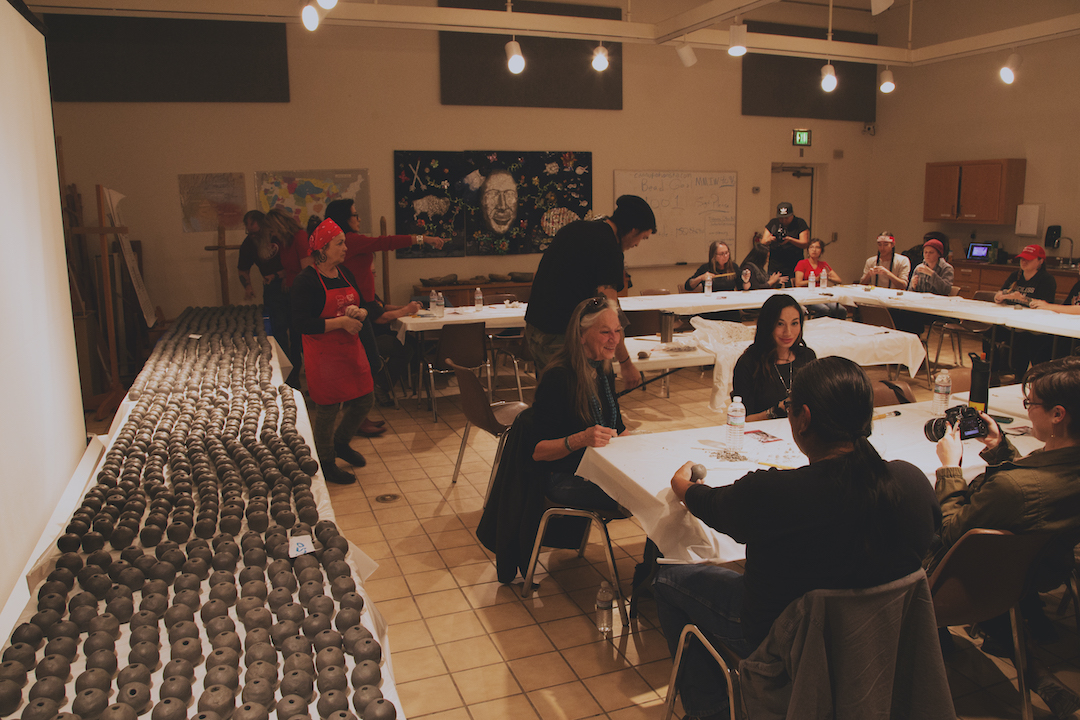
Image Credit: Robert Mesa
Museum of Indian Arts and Culture, Santa Fe, NM, 2018
Community engagement resulting in over 1000 clay beads

The Mirror Shield Project (2016-ongoing)
Concept Artist: Cannupa Hanska Luger
Drone operation / Performance organization: Rory Wakemup
Oceti Sakowin Camp, Standing Rock, ND December 2016
Drone Video Still Image Courtesy of the Artist, Cannupa Hanska Luger
The Mirror Shield Project was initiated in 2016 in support of the Water Protectors standing up against the Dakota Access Pipeline near Standing Rock, ND. Through a tutorial video that went viral on social media, Cannupa Hanska Luger invited people to create mirrored shields that would be used in onsite frontline actions. In only a few short weeks, over a thousand shields were received from across the nation and became central to the Protector’s visual language and the events that ensued. The Mirror Shield Project has since been formatted and used in various resistance movements across the world
"As artists, we live on the periphery. But we are the mirrors. We are the reflective points that break through a barrier." -Cannupa Hanska Luger, L.A. TIMES


Turtle Island direction action, Oceti Sakowin, Standing Rock, ND
Thanksgiving Day, 2016, police in reflection
Image Credit: Rob Wilson Photography
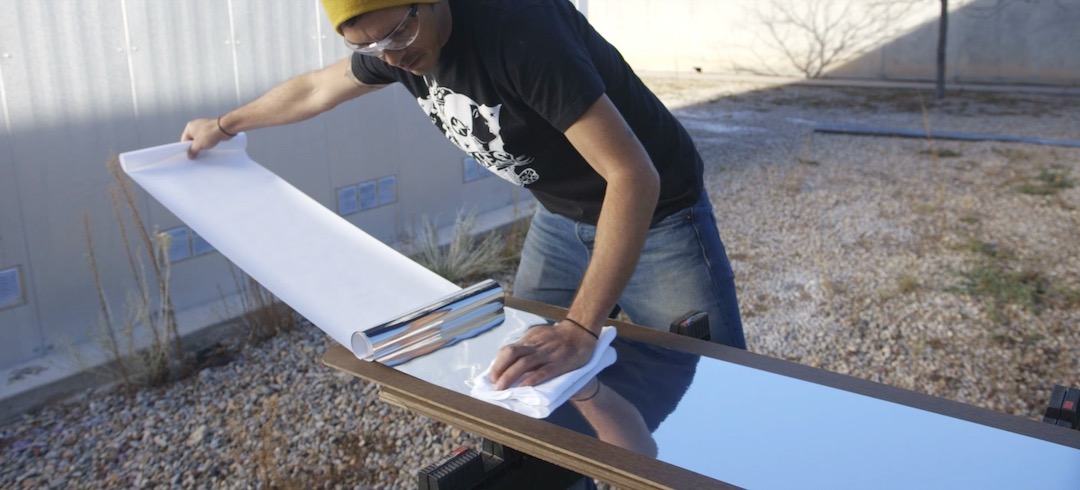
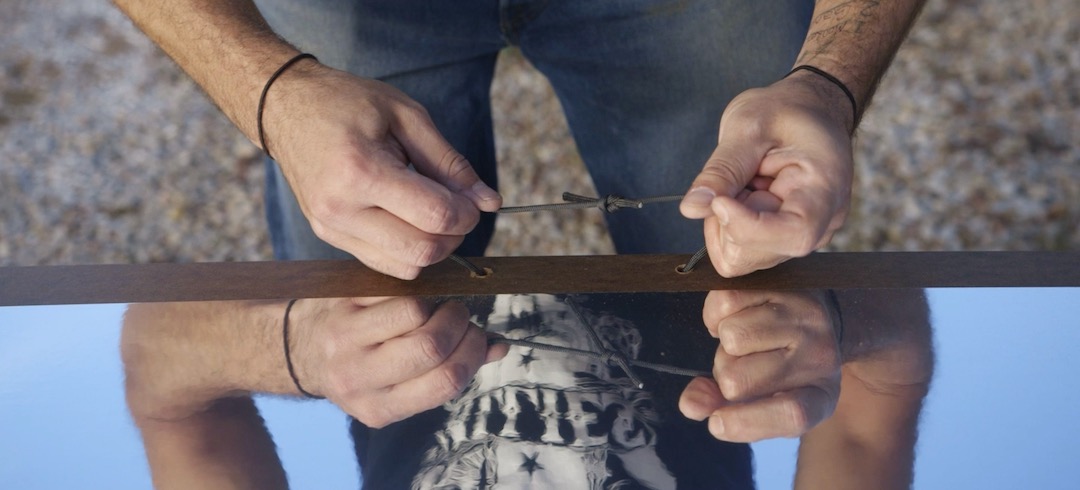
How to Build Mirror Shields for Water Protectors
Image Credit: Video Image Still. Camera/Edit Razelle Benally
Full Project Narrative (PDF)
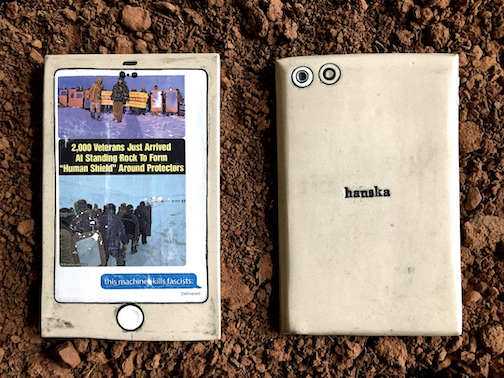


The Weapon is Sharing (This Machine Kills Fascists), 2017
ceramic
6" x4" x 1/4" each, varies
The Weapon is Sharing (This Machine Kills Fascists) increases permanence of our contemporary stories as told through societies current throw-away technology. Phone objects recreated out of clay in a state of vitrification may last forever and relay urgent recognition of our current environment. Forcing antiquity on our modern technology through a visual approach creates accessibility for Indigenous perspective to immediately penetrate the historical record.
Our contemporary tools of documenting are made out of materials which will not sustain our stories long term. And so impressing onto clay current narratives from Indigenous perspective, as documented on social media in instances such as at Standing Rock, means these stories now last forever. Creating objects of technology out of clay with a weathered finish recognizes how western society credits Indigenous narratives as historically relevant and archival primarily as artifact. These objects mirror the decayed aesthetic of the artifact to inspire institutions who collect our sacred objects to embed this narrative into their basements and cabinets, letting these pieces join our relatives, so that our ancestors may know what we as Indigenous peoples are currently experiencing. Much as we update our statuses on social media for the current world know our stories, these objects utilize a visual language from our contemporary communication, translating into a literal form of talking to our ancestors. Confined in museums and private collections, the ancestors of all nations are close to each other, communicating and creating alliance in dark caverns, as a pooling of medicines which is reflected in our contemporary gatherings such as at Standing Rock. This work aims to let them know how we are hearing them, and we are connecting.







 Website:
Website: